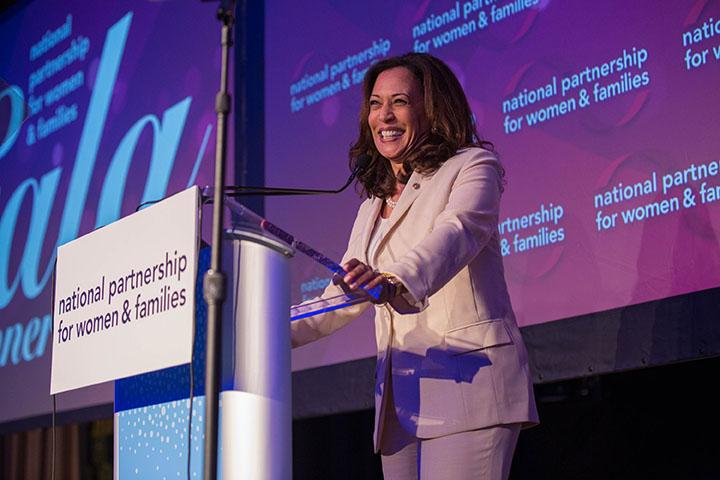For more than 30 years, the Family and Medical Leave Act (FMLA) has provided eligible employees with the right to take job-protected leave from work for family and medical reasons while keeping their health insurance. But FMLA leave is unpaid – a significant obstacle for eligible workers who need to take leave. According to new estimates from the National Partnership, in 2024, of the 11.1 million workers who needed leave but did not take it, two-thirds say it was because they could not afford unpaid leave.
We’re long overdue for federal action to enact universal, comprehensive paid family and medical leave in this country. Until we get there, workers may have other options to replace wages during FMLA leave, including employer-provided paid leave and payments from state paid leave programs. 14 states, including the District of Columbia, already have paid family and medical leave programs in place.
Last month, the U.S. Department of Labor released new guidance on the interaction between employer-provided leave and state paid leave benefits. The guidance makes clear that an employer cannot unilaterally require an employee on FMLA leave and receiving state paid leave benefits to use their accrued paid leave (e.g., vacation, sick, personal, medical and family leave). Both the employee and employer have to agree.
So what does that actually mean?
Practically, this means an employee who wants to maximize the amount of time they receive pay during their FMLA leave can take accrued paid leave (e.g., vacation, sick, personal, medical and family leave) after their state paid leave benefits have run out. This is particularly helpful in states that offer less than 12 weeks of paid leave benefits.
Example 1 (based on the example provided in the guidance):
- Sarah needs eight weeks of leave.
- She takes FMLA leave and also receives state paid leave benefits that replace two-thirds of her average weekly pay for up to six weeks.
- After week six of her leave, she’s exhausted her benefits under her state’s paid leave program.
- Sarah then opts to use her accrued vacation time for the last two weeks of her FMLA leave.
On the other hand, an employee who wants full or greater wage replacement during FMLA leave can take accrued paid leave (e.g., vacation, sick, personal, medical and family leave) at the same time as receiving state paid leave benefits.
Example 2 (based on the example provided in the guidance):
- Sarah needs six weeks of leave.
- Sarah takes FMLA leave and also receives state paid leave benefits that replace two-thirds of her average weekly wage for up to six weeks.
- Sarah agrees with her employer to use one-third of a week of her accrued vacation time each week on top of her state’s paid leave benefit to receive full pay.
| If you’re taking FMLA and: | Then you can use accrued paid leave (including vacation, sick, personal, family or medical leave) during your FMLA leave if: |
|---|---|
| Not receiving any state paid leave benefits | You decide unilaterally or Your employer decides unilaterally |
| Receiving state paid leave benefits | Both you and your employer agree and your state allows it. Your employer cannot unilaterally make you take it. |
One important note: the FMLA serves as a floor, not a ceiling. State law might give employees sole discretion to decide whether to take accrued paid leave while receiving state benefits.
Here’s some background on the policy in this guidance:
1. Under the FMLA’s “substitution” rules, an employee can take paid leave they have accrued from their employer at the same time as they take all or part of their unpaid FMLA leave.
This means the employee has all the protections of FMLA leave, including job and benefit protections, and can continue to receive pay through their accrued paid leave. This includes employer-provided vacation, sick, personal, family and medical leave. As the Labor Department has highlighted, this helps “to mitigate the financial impact of wage loss due to family and temporary medical leaves.”
Also, under the law, the type of employer-provided leave an employee can take depends on the reason for FMLA leave.
| If an employee needs to take FMLA leave for: | Then this is the type of accrued employer-provided leave that can be taken at the same time: |
|---|---|
|
|
|
|
|
|
2. The FMLA’s “substitution” rules do not give employees full control over when and if they can take their accrued paid leave at the same time as unpaid FMLA leave.
An employee can opt to take their accrued paid leave at the same time as their unpaid FMLA leave. If an employee opts to “substitute,” an employer cannot deny them use of the accrued paid leave.
But if an employee does not opt to use their accrued leave, an employer can unilaterally require the employee to take the paid leave during their unpaid FMLA leave. As an example from the Labor Department:
[I]f you are out for one week recovering from surgery, and you have two weeks of paid vacation saved up, your employer can require you to use one week of your vacation time for your FMLA leave.
3. These “substitution” rules do not always apply.
The FMLA substitution provisions do not apply when, during FMLA leave, an employee receives payments from workers’ compensation or a disability plan. This is because leave or an absence under a disability plan or workers’ compensation is not unpaid. In this case, neither the employee nor the employer can unilaterally decide that the employee will take paid leave at the same time as FMLA leave.
4. For years, the Labor Department was silent on whether “substitution” rules apply to state paid leave benefits.
Over the last 20 years, 14 states, including the District of Columbia, have enacted state programs providing paid family and medical leave benefits to their residents. But FMLA regulations related to paid leave substitution, first issued in 1995, are silent on whether the FMLA’s substitution provisions apply when an employee receives payments from a state paid leave program.
The Labor Department’s new guidance makes clear that employees in states that provide paid leave benefits have some control over determining how to use the accrued paid leave available to them. The Labor Department reasons that the same principles that apply for workers’ compensation and disability plans apply to state paid leave benefits.
Currently, it is unclear if the Trump Administration’s Labor Department will maintain this guidance. This guidance was issued as an opinion letter by the previous head of WHD in response to a request from the public on how the agency interprets and enforces the law. New leadership at the agency usually withdraws or maintains opinion letters and other guidance based on the Administration’s policy views and enforcement priorities.
As more states enact paid leave, it is important for workers to understand their options. This guidance provides critical clarity that can help employees make decisions that best support their family and medical leave needs.


